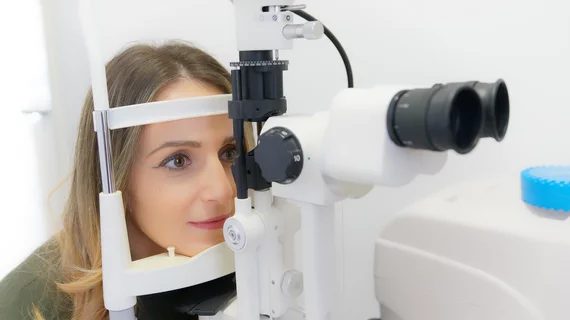Should patients and referrers worry that radiologists have ‘normal blindness’ just like everyone else?
All humans carry a condition that, in certain circumstances, keeps their eyes from seeing something obvious right in front of them.
Vision researchers are calling the phenomenon “normal blindness”—and noting that radiologists are no less susceptible to bouts of it.
One of the researchers using the phrase out to know. He’s Jeremy Wolfe, PhD, a professor of radiology (and of ophthalmology) at Harvard Medical School and principle investigator in the Visual Attention Lab at Brigham and Women’s Hospital.
Wolfe has lead-authored a new study that looks normal blindness square in the eye. The journal Trends in Cognitive Sciences published the paper July 21 [1]. The work piqued the interest of a medical writer with NBC News who spoke with Wolfe for The Today Show.
“We’ve got very substantial limits on what we can attend to at any given moment, and there’s way too much stuff coming in for our brains to attend to everything,” Wolfe tells the reporter, Linda Carroll.
Most of what gets overlooked in daily life is inconsequential, Wolfe assures. Think typos in your own writing or the dead skunk in the middle of the road that you never swerved to avoid. D’oh.
“But if you’re doing things like radiology,” Wolfe points out, “you want to cut down on errors.”
Reporter Carroll recounts an image-interpretation experiment Wolfe and colleagues conducted some years ago.
In the test, more than 80% of radiologists missed an image of a gorilla planted in a lung CT scan.
Wolfe says this instance of “normal blindness” owed to the rads’ instructions going in: Find and identify any small white nodules.
More Wolfe as told to Carroll:
The brain is limited to attending to about 20 to 30 things per second. If you are paying attention to every leaf on a tree and every pebble on the ground, you’re going to be stuck in place. These mechanisms help us get through the world, and inevitably we miss stuff.”
Carroll, co-author of the book The Concussion Crisis: Anatomy of a Silent Epidemic, also quotes David Calkins, PhD, a professor of ophthalmology and visual sciences at Vanderbilt.
“You don’t necessarily see what you’re not looking for, and that has implications for navigating the world, for example, ducking at the right moment when you don’t see something headed your way,” Calkins says. “It also has implications for how we use scans, which are made at increasingly high resolution, to make diagnoses. It highlights the need for multiple pairs of eyes.”
Full Today Show article here.

